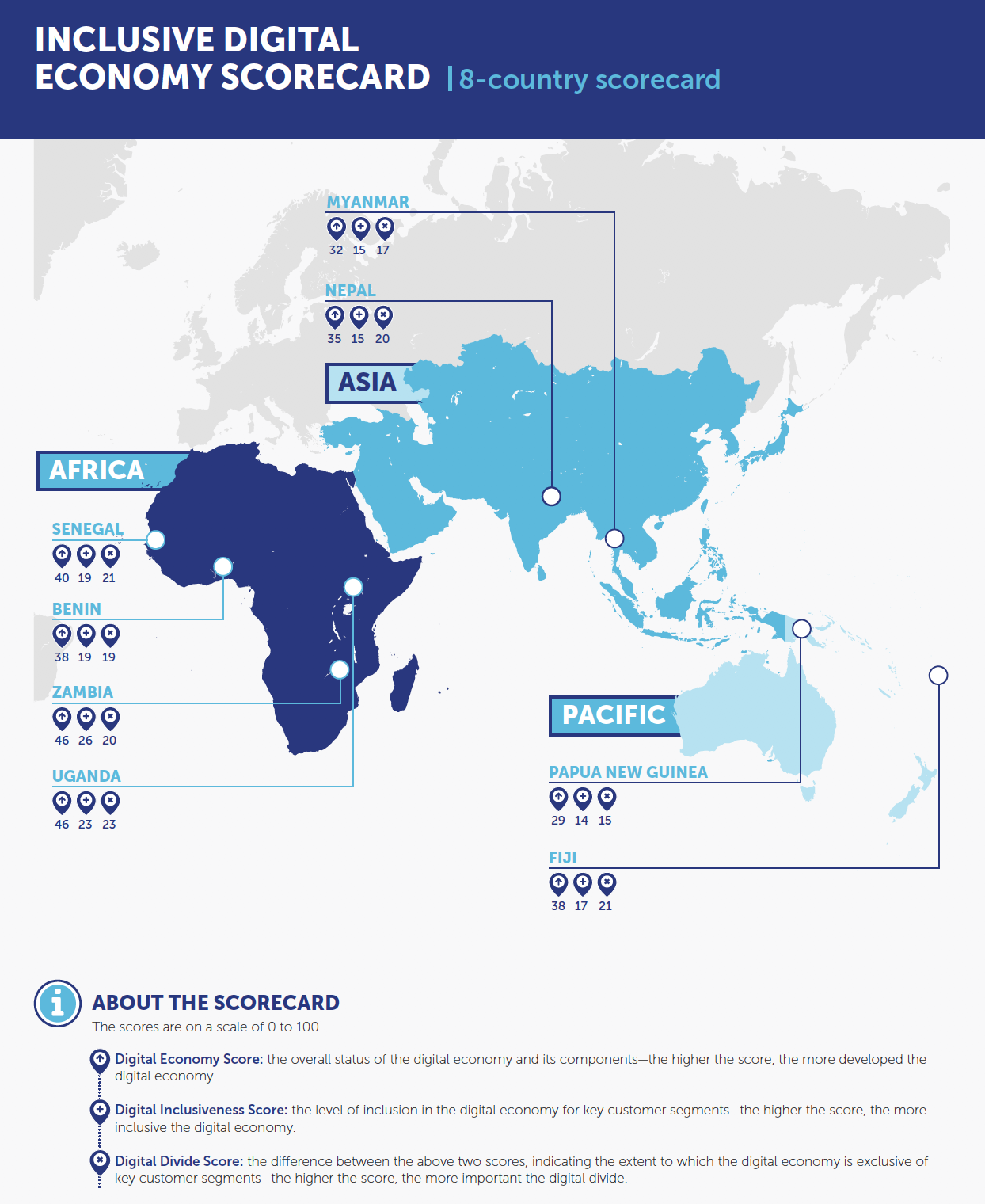UNCDF Introduces the Inclusive Digital Economy Scorecard During UN General Assembly
For more information
Karima Wardak
Knowledge Management
Karima.wardak@uncdf.org
David Mikhail
Communications Specialist
David.mikhail@uncdf.org
Please visit our dedicated website at https://ides.uncdf.org
Tags
The United Nations Capital Development Fund (UNCDF)—the UN agency that makes public and private finance work for the poor in the world’s 47 least-developed countries—introduced a new tool to measure inclusion in emerging digital economies. The Inclusive Digital Economy Scorecard (IDES), which is currently being piloted in eight countries, was presented on the occasion of the UN General Assembly.
Digital technologies and innovation are forming new economies as well as creating new platforms for connectivity and collaboration – from the way farmers sell and pay for their goods, to the way youth learn new skills via YouTube and WhatsApp, to the ways that local and national communities are conversing. However, the existing indices that are intended to measure the progress of digital inclusion have not kept up with these innovations in digital technologies. Ironically, in an age of increasing data on digital usage, reliable data on such usage in low income countries is hard to acquire. The lack of reliable data is particularly acute as it relates to traditionally marginalized communities; including women, youth, rural inhabitants and general populations in least-developed countries, or the “last mile.”
As a UN agency mandated to support financial inclusion in the least developed countries, with years of on-the-ground experience in helping these countries develop and grow inclusive digital economies, UNCDF is well-positioned to lead the work in developing effective metrics to measure digital inclusiveness. Moving beyond existing indices that focus largely on adoption of digital technologies, the Inclusive Digital Economy Scorecard (IDES) is a strategic performance tool that identifies the key market constraints hindering the development of an inclusive digital economy, while helping advance the right priorities with public and private sector stakeholders for each country.
“We developed IDES with our team in Asia, Africa and the Pacific. Our objective is to create an easy-to-use tool to measure and track the development of an inclusive digital economy in each country where UNCDF operates. It is fundamental to keep it as simple as possible to allow a wide adoption of the tool globally” explained François Coupienne, UNCDF Global Digital Manager.
Under IDES, the inclusiveness of the digital economy is measured through a qualitative assessment of public and private sector efforts to include specific population segments in the expansion of the digital economy. These segments include women, youth, refugees, migrants, micro-, small- and medium-sized enterprises, and rural inhabitants. The scorecard considers the four following building blocks relevant to the development of a digital economy:
- The extent to which a government actively promotes the development of an inclusive digital economy and the extent to which policy and regulation support digital finance and the digital economy;
- The level of development of mobile infrastructure (e.g., phone ownership and network coverage) and the status of the digital payment ecosystem;
- The state of a country’s innovation ecosystem;
- The active participation of the public and private sectors on digital and financial skills development, and the usage of digital channels for relevant skills development.
The pilot version of the IDES has been deployed in eight countries spanning four regions (West Africa: Benin and Senegal; Eastern and Southern Africa: Uganda and Zambia; Asia: Myanmar and Nepal, Pacific: Fiji and Papua New Guinea). In each of these eight countries, UNCDF has a team with extensive digital expertise that works closely with the government, the private sector and academia to drive the development of the digital economy. The wealth of market knowledge and relationships at the national level allows UNCDF to collect the right information from the market, identify key market constraints and develop a roadmap that will guide the creation of an inclusive digital economy.
Updated on a yearly basis, the IDES is a strategic tool to measure development of the market and to set priorities based on the dynamic context of the digital era. Besides being an internal tool, UNCDF believes the scorecard will be useful to a global audience of partners and peers, and it actively seeks feedback from partners to improve the scorecard system. The IDES is a central tool of UNCDF’s digital strategy, ‘Leaving no One behind in the Digital Era.’
UNCDF believes that if we are to leave no one behind in a digital era, we must have metrics that accurately measure the way digital economies are emerging and to what extent they are inclusive. Besides being an internal tool, UNCDF believes the scorecard will be useful to a global audience of partners and peers, and it actively seeks feedback from partners to improve the scorecard. “Now that we have tested the scorecard in 8 countries, the next step is to work with partners to continuously improve the scorecard and add countries so that it becomes a reference tool for a larger audience globally.” concludes François Coupienne.
